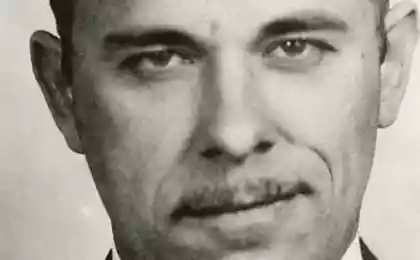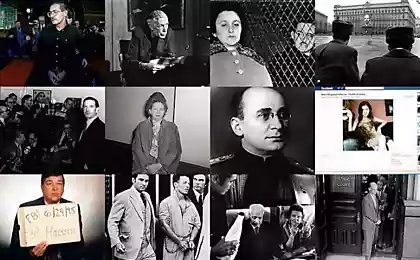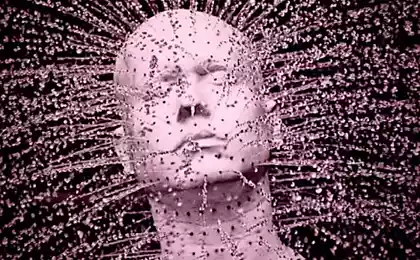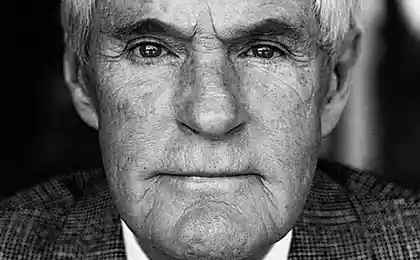493
Charm as an exact science: former FBI agent explains how to please others
It often seems that the ability to arouse sympathy and make friends — it is an innate talent or a kind of intuitive knowledge, which is impossible to perform and even more to apply consciously. But the experience of people for whom charm is a professional necessity — in particular, intelligence agents shows that charm and charisma can bring to life, knowing certain techniques. In the book "turn on the charm", recently published in the publishing house "Mann, Ivanov and Ferber", the specialist for the FBI behavioral analysis Jack Shaffer explains what constitutes "friendship formula".

Formula of friendship
Jack Shaffer, "turn on the charm"
The friendship formula consists of four main components: proximity, frequency, duration and intensity. Proximity is the distance between you and the other person as well as your regular appearance in his field of vision. Only one finding in the field of view of the object of recruitment is critical to establish personal relationships. The proximity of the object awakens in sympathy for you and causes the mutual attraction. The result is people are beginning to pull each other even if they don't exchange words. The main condition to create close — to be in a safe environment. If a person feels threatened by overly Intrusive and too close presence of another person, he is attentive and tries to sneak away, avoiding further convergence. Frequency means the number of contacts you are entering into with the other person per unit time, and the duration — the duration of each contact. Intensity is the ability to satisfy psychological and (or) physical needs of another person through verbal or nonverbal behavior. For example, when in a known environment there is a new stimulus, the brain detects this stimulus represents a real threat or imaginary. If a new stimulus is not perceived as a threat, he becomes the object of curiosity and one seeks to find out who he is? Why is he here? Can I use it for my benefit?
Nice facial expressions
Signals of friendliness quite a lot, but for our purposes we will select the three most important. They should definitely use if you want people from the first sight recognizes in you a friendly person, worthy of friendship. These include: the play of eyebrows, a tilt of the head and sincere and not fake smile (Yes, the human brain immediately detects tampering!)
Game eyebrows means their quick (instantaneous) to climb lasting about one sixth fraction of a second, is the first, main, and main a friendly signal. When people approaching, they raise their eyebrows, they thereby show that they did not know each other's threats. Our brain recognizes the signal in the distance. about five feet. After receiving it, we send the partner a response non-verbal signal that we can not be afraid and do not avoid it, because we have no hostile intentions. Most people are not even aware of this gesture, as it is almost always performed automatically and unconsciously. Try to observe people meeting up for the first time in my life, and, if possible, with the development of their communication. If people greet each other at work or social events, along with the game eyebrows they use verbal greeting, such as: "welcome!" "Good day!", "How are you?". At the second meeting, the greeting words can be omitted, but people still continue to play the eyebrow or if it's men, chin. The chin in this kind of a greeting is moving forward and slightly upwards.
Head tilt to the right or left is seen as a gesture, not a threat. This tilt targeting one of the carotid arteries, located on the side of the neck on both sides. The carotid arteries supply oxygen to the brain. Break even one of them in a few minutes leads to death. People who feel threatened, instinctively hiding the carotid artery, pulling his shoulders and neck open when meeting with a person from whom nothing expect.
Smile is a powerful signal of friendliness. A smiling person seems more attractive, likeable, less arrogant. The smile implies confidence, contentment and enthusiasm and, most importantly, is recognition of equality with the interviewee. She tells about friendly feelings, increases the attractiveness of a person and, in addition, leads the interviewee in a good mood and good spirits. For the most part, people smile and are pleasant to them people and don't smile to those who they don't like
If you want to like it, then your smile must be sincere. Characteristic of a smile raised the corners of the mouth, movement of the cheek upward and the appearance of wrinkles around the eyes. In contrast to this, made smile is often crooked. Right-handers have a fake smile most strongly noticeable on the right side of the mouth, and left-handers, respectively, on the left. Fake smile, in addition, deprived of synchronicity. It starts later than sincere, and so unnatural ends. With a sincere smile the cheeks are raised, formed under the eyes folds of skin at the outer corners of the eyes appear rays wrinkles; in some people, the tip of the nose drops down. If the false smile, the corners of the mouth do not rise, not rise and cheeks, because of this there are no creases and wrinkles around the eyes — clear signs of a real smile.
Alarms and mistrust
A great way to check if you have achieved mutual trust and understanding is the observation of the fact, removes or man erects barriers between himself and the interlocutor. People experiencing discomfort from intercourse, or erect such barriers, or leave in place the existing barriers. On the contrary, those who feel comfortable during communication will keep open space between themselves and the interviewee, or will remove already erected barriers. Attempts to close the trunk or chest they say about the hostility. For lunch you can observe the non-verbal signal, if you see the person on the table some items (which are not removed, but left in place).
People experiencing anxiety often give themselves away by the fact that in the course of the conversation for a long time and cover their eyes. Then the eyelids are a barrier, not allowing to see the source of anxiety or discomfort — a person or thing. Several times in the chief's office I saw it, severing his head from the table, for a second or two closed my eyes. This meant that he is busy and doesn't want to talk to me. Usually we have the chief expressions of psychiatrists, established good rapport, but in those days, I immediately apologize and disappear. In these moments, my boss probably reacted very negatively to my requests, proposals or reports, as his non-verbal behavior makes it clear that it should be left alone.
Another important observation: when testing the alarm, the person usually begins to blink. Normally we blink about fifteen times a minute. But in exciting moments happen much more often. Of course, at rest, we all blink different number of times. Therefore, the change in frequency of movements of the eyes associated with your intense communication, it is necessary to compare with how often he blinked, once you appeared in his field of vision.
Source: theoryandpractice.ru/posts/10850-charming

Formula of friendship
Jack Shaffer, "turn on the charm"
The friendship formula consists of four main components: proximity, frequency, duration and intensity. Proximity is the distance between you and the other person as well as your regular appearance in his field of vision. Only one finding in the field of view of the object of recruitment is critical to establish personal relationships. The proximity of the object awakens in sympathy for you and causes the mutual attraction. The result is people are beginning to pull each other even if they don't exchange words. The main condition to create close — to be in a safe environment. If a person feels threatened by overly Intrusive and too close presence of another person, he is attentive and tries to sneak away, avoiding further convergence. Frequency means the number of contacts you are entering into with the other person per unit time, and the duration — the duration of each contact. Intensity is the ability to satisfy psychological and (or) physical needs of another person through verbal or nonverbal behavior. For example, when in a known environment there is a new stimulus, the brain detects this stimulus represents a real threat or imaginary. If a new stimulus is not perceived as a threat, he becomes the object of curiosity and one seeks to find out who he is? Why is he here? Can I use it for my benefit?
Nice facial expressions
Signals of friendliness quite a lot, but for our purposes we will select the three most important. They should definitely use if you want people from the first sight recognizes in you a friendly person, worthy of friendship. These include: the play of eyebrows, a tilt of the head and sincere and not fake smile (Yes, the human brain immediately detects tampering!)
Game eyebrows means their quick (instantaneous) to climb lasting about one sixth fraction of a second, is the first, main, and main a friendly signal. When people approaching, they raise their eyebrows, they thereby show that they did not know each other's threats. Our brain recognizes the signal in the distance. about five feet. After receiving it, we send the partner a response non-verbal signal that we can not be afraid and do not avoid it, because we have no hostile intentions. Most people are not even aware of this gesture, as it is almost always performed automatically and unconsciously. Try to observe people meeting up for the first time in my life, and, if possible, with the development of their communication. If people greet each other at work or social events, along with the game eyebrows they use verbal greeting, such as: "welcome!" "Good day!", "How are you?". At the second meeting, the greeting words can be omitted, but people still continue to play the eyebrow or if it's men, chin. The chin in this kind of a greeting is moving forward and slightly upwards.
Head tilt to the right or left is seen as a gesture, not a threat. This tilt targeting one of the carotid arteries, located on the side of the neck on both sides. The carotid arteries supply oxygen to the brain. Break even one of them in a few minutes leads to death. People who feel threatened, instinctively hiding the carotid artery, pulling his shoulders and neck open when meeting with a person from whom nothing expect.
Smile is a powerful signal of friendliness. A smiling person seems more attractive, likeable, less arrogant. The smile implies confidence, contentment and enthusiasm and, most importantly, is recognition of equality with the interviewee. She tells about friendly feelings, increases the attractiveness of a person and, in addition, leads the interviewee in a good mood and good spirits. For the most part, people smile and are pleasant to them people and don't smile to those who they don't like
If you want to like it, then your smile must be sincere. Characteristic of a smile raised the corners of the mouth, movement of the cheek upward and the appearance of wrinkles around the eyes. In contrast to this, made smile is often crooked. Right-handers have a fake smile most strongly noticeable on the right side of the mouth, and left-handers, respectively, on the left. Fake smile, in addition, deprived of synchronicity. It starts later than sincere, and so unnatural ends. With a sincere smile the cheeks are raised, formed under the eyes folds of skin at the outer corners of the eyes appear rays wrinkles; in some people, the tip of the nose drops down. If the false smile, the corners of the mouth do not rise, not rise and cheeks, because of this there are no creases and wrinkles around the eyes — clear signs of a real smile.
Alarms and mistrust
A great way to check if you have achieved mutual trust and understanding is the observation of the fact, removes or man erects barriers between himself and the interlocutor. People experiencing discomfort from intercourse, or erect such barriers, or leave in place the existing barriers. On the contrary, those who feel comfortable during communication will keep open space between themselves and the interviewee, or will remove already erected barriers. Attempts to close the trunk or chest they say about the hostility. For lunch you can observe the non-verbal signal, if you see the person on the table some items (which are not removed, but left in place).
People experiencing anxiety often give themselves away by the fact that in the course of the conversation for a long time and cover their eyes. Then the eyelids are a barrier, not allowing to see the source of anxiety or discomfort — a person or thing. Several times in the chief's office I saw it, severing his head from the table, for a second or two closed my eyes. This meant that he is busy and doesn't want to talk to me. Usually we have the chief expressions of psychiatrists, established good rapport, but in those days, I immediately apologize and disappear. In these moments, my boss probably reacted very negatively to my requests, proposals or reports, as his non-verbal behavior makes it clear that it should be left alone.
Another important observation: when testing the alarm, the person usually begins to blink. Normally we blink about fifteen times a minute. But in exciting moments happen much more often. Of course, at rest, we all blink different number of times. Therefore, the change in frequency of movements of the eyes associated with your intense communication, it is necessary to compare with how often he blinked, once you appeared in his field of vision.
Source: theoryandpractice.ru/posts/10850-charming
Lao-Chun: the Praise of a hundred medicines
Japan began to struggle with the lack of energy using floating solar power plants























